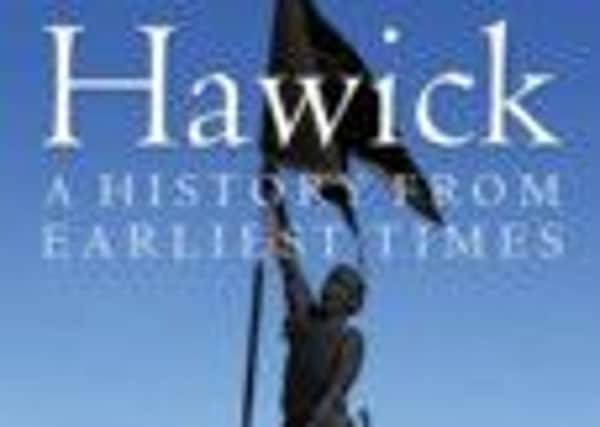Review: Hawick - A History from the Earliest Times


Hawick: A History from the Earliest Times
Alistair Moffat
Birlinn, 206pp, £14.99
Apart from an introductory mention of the Hawick callants’ victory over a party of English raiders at Hornshole – the quincentenary is being celebrated this year – we’re a full third of the way into the book before Hawick becomes part of the kingdom of Scotland in the 11th century.
“From the earliest times” means, for example, right back to the Iapetus Suture, that great joining of continents when Scotland (then part of America and the North of Ireland) crashed into England (then part of southern Ireland and Europe). This all happened around 410 million years ago, so quite possibly predates the rivalry with Galashiels.
Advertisement
Hide AdOne of Moffat’s tropes is an ability to start off a chapter miles away from its focal point, and then spin the narrative round until it centres on it. One reads the chapter beginning with the Iapetus Suture with the suspicion that it might have very little indeed to do with, say, Hawick rugby or the decline of the woollen mills or whatever you might expect from a book of local history. A few more polymathic passes – geology, mitachondrial DNA, the ancient territory of the Selgovae and the Border reivers (all subjects, of course, upon which Moffat has written books) – and it becomes apparent that all is well and we are, in fact, talking about Hawick after all. Just a bit more stylishly than we might be used to.
It’s a technique that works well, not least because Hawick’s history has indeed been profoundly influenced by the weirdest concatenation of events far outside its own boundaries: indeed, I’m half surprised that Moffat didn’t have a chapter on cashmere beginning with the discovery of the thermal properties of goat underhair on a hillside in 14th century Persia. Because, as he shows, the other turning points that boosted Hawick were just as outlandish.
Take the Crimean war, for example. All Britain’s imperialist wars seem to have been good for the woollen industry, but isn’t it odd that the cardigan triumphed in spite of the ineptitude of the general it was named after? Better still, consider how the worldwide Y-front industry, from which Hawick profited so greatly, was almost strangled at birth in 1935. On 19 January that year, in the middle of the winter’s worst blizzard, Chicago’s biggest department store had a new window display of “jockey shorts”. The store’s managers ordered it to be changed, but within the hour it took for word to get down to the shopfloor, some 600 of the new-fangled cotton briefs had been sold and a fashion trend was born.
That ability to pick out a killer fact to reel in the casual reader, allied to a similarly journalistic talent as a phrase-maker (a type of Victorian underwear, for example, is “the 19th century equivalent of a onesie”) is a keynote of Moffat’s writing. He’s also got the ability to imagine the past that has moved beyond our immediate grasp: to picture the Romans surveying the Craik road, the Norman French Lovels building a motte and bailey above the 12th century village of Hawick just as they had on their Somerset estate at Castle Cary, or the fifth century inhabitants of the Burgh Hill hillfort.
This isn’t a work of sociology, and it would be a mistake to look here for any indication of what kind of place Hawick will be as this century unfolds. Although it doesn’t ignore the present, its focus is tinged with a warm-hearted nostalgia for the days when trains still ferried Hawick folk to their away matches in the Border League, when the mills still hummed with activity and the town was reckoned to be, per capita, the highest dollar earner in Britain (and its best-dressed town too, come to that).
It’s also written with love. Moffat’s mother was a Hawick lass and accompanying her on trips home meant memories of vast picnics at the common ridings with an extended but close-knit family of 30 or 40 sitting down together to watch the races, over drinks and sandwiches in the June sunshine.
Advertisement
Hide AdOther visits were not so sweet. Aged 18 and playing for Kelso against Hawick at Riverside Park, he tackled a player on the touchline, only to be spat at by the crowd and called a “dirty Kelsae bastard”. After this book – a model of what local history should be – I think Hawick owes him a belated apology.